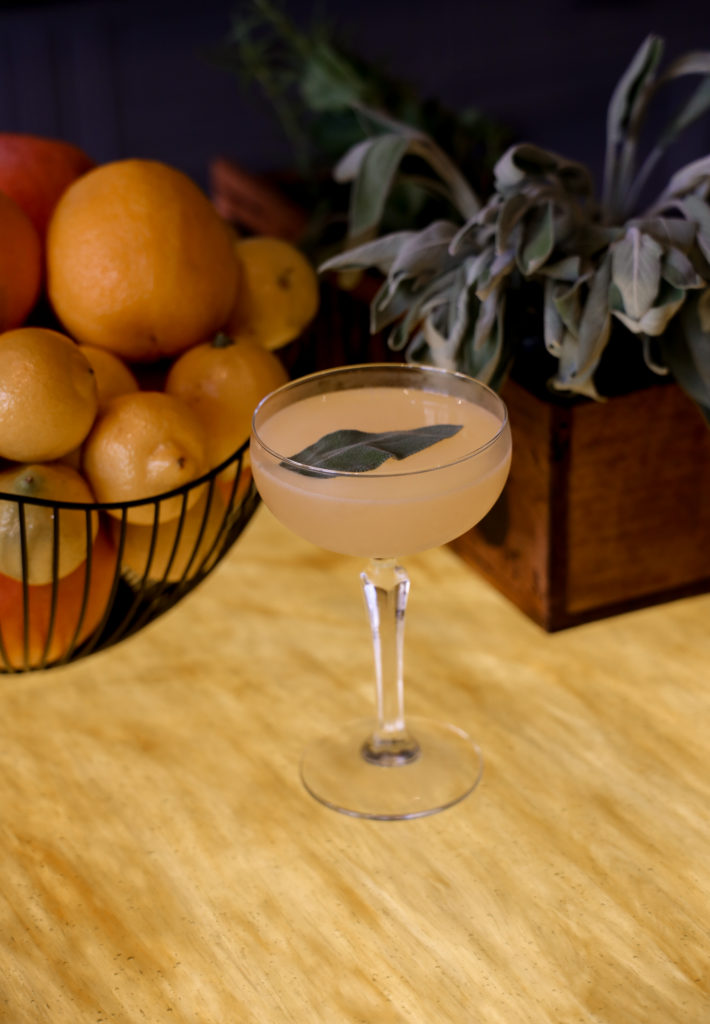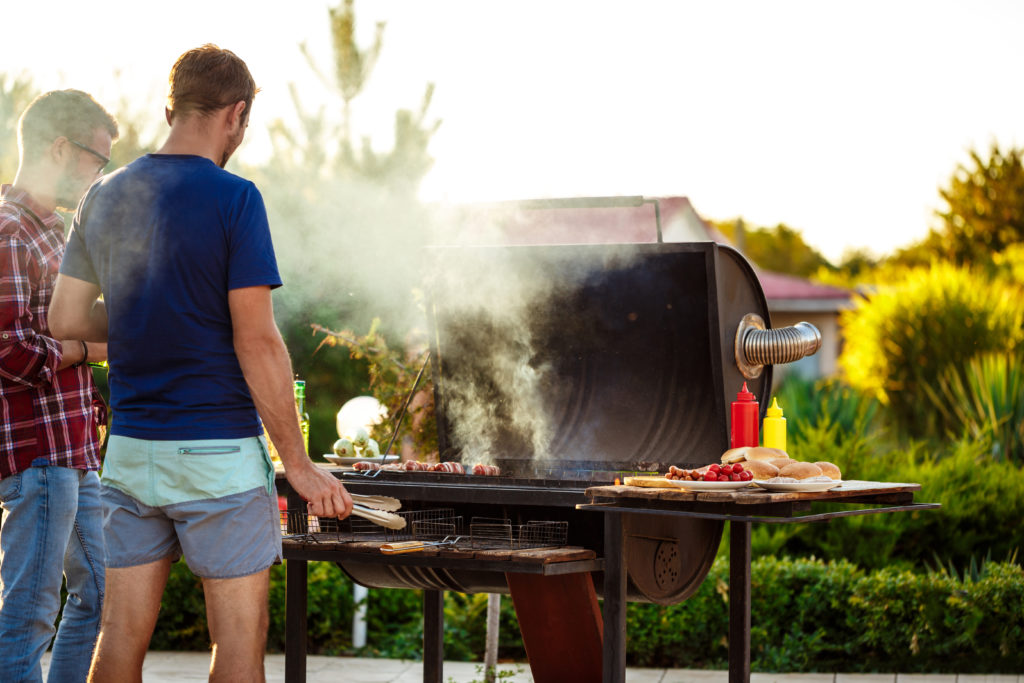Your outdoor kitchen is a place to spend more time with family and friends, relax, eat and enjoy a glass of wine. Building and designing this outdoor space is fun and exciting but it also requires a lot of planning. Keep in mind the following considerations for creating an ideal space suited for your lifestyle needs.
1
BUDGET
Create a budget and keep track of prices. Make sure you have a line item for every single element in the space – appliances, furniture, lighting, etc. Keep in mind that while top-of-the-line grills, griddles, ovens, and appliances may cost more, they also perform better and last longer. Make sure you don’t forget about utilities such as gas, electricity, and running water. These line items often include additional subcontractors, materials, and permits.
A good starting point for a luxury outdoor kitchen is around $35,000.
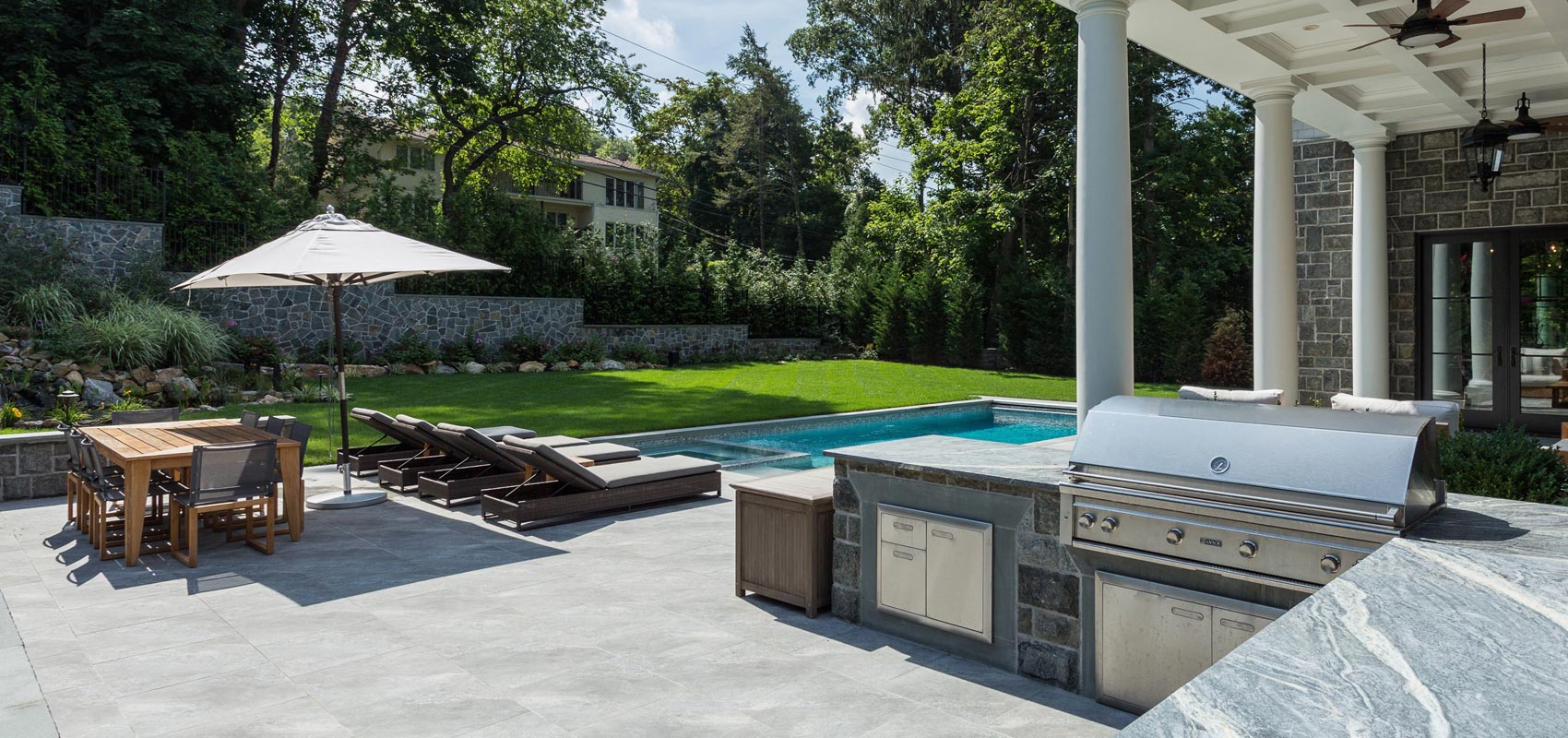
2
SIZE, LAYOUT, AND FUNCTIONALITY
When designing your outdoor kitchen the most important thing is to align your design with how you plan to live in and use the space (will it be used for entertaining, dinner parties, or simply a glass of wine with your partner?). If you love to host, cook, entertain lots of guests, and you have the space, consider a full-sized kitchen with a variety of cooking options (grill, griddle, wood fire oven, etc), a prep station, bar, coolers, and dining area. If you are limited on space, prioritize what’s most important to you – that may be a high-end grill if you love to cook or a small seating area centered around a fire pit to relax with a few friends.
It’s also helpful to think of the kitchen layout in terms of zones. The four functional zones are:
- Dry – storage and prep counters
- Wet – sinks and beverage tubs
- Cold – refrigeration and freezers
- Hot – grills, side burners, pizza ovens
The key to designing an outdoor kitchen that functions seamlessly is to design all four zones to work together. For example, the cold zone should be next to the wet zone, so it’s easy to move food from the refrigerator to the sink, wash it, and prep it for grilling in the hot zone. You don’t want to place a fridge or beverage cooler next to the grill/hot zone.
Think about other outdoor living activities, as well. If there is a pool, consider placing beverage refrigeration and seating around/near it.
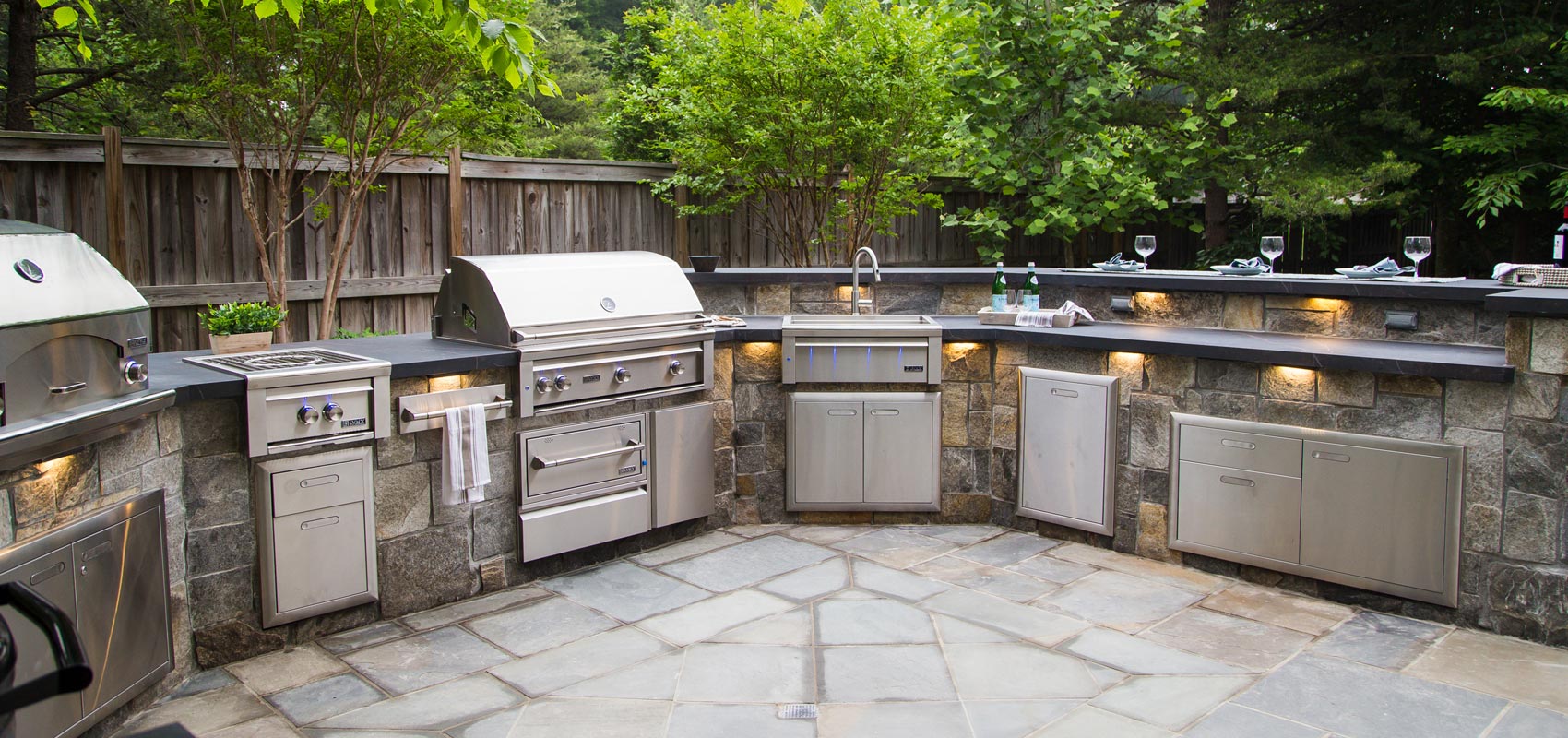
3
CLIMATE
Look for materials that can withstand all types of weather in your area. Stainless steel is one of the most durable materials for an outdoor space. It won’t warp or rust. Some manufacturers provide marine-grade appliances or powder coat finishes that offer additional protection and weather resistance.
Teak is great for outdoor furniture as it naturally repels water which keeps it from warping, cracking, or becoming brittle. It is super low maintenance and does not need to be treated like most woods. It goes through a natural aging process when in the sun and patinas to a lovely light silvery-grey over time.
Incorporate heaters, fans, misters, and fire pits to extend the use of your space year-round.
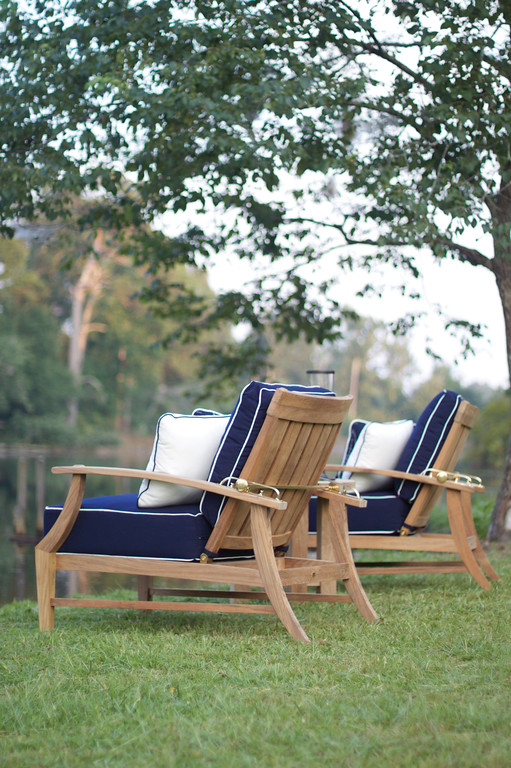
4
SEATING
There are three types of seating to consider when planning your space and kitchen: dining, bar, and lounge. If you have the space, all three are ideal – you want to create multiple areas to eat, drink and socialize. Consider using two square dining tables to make one large table so it’s more versatile. Put the bar with barstools near the cooking and prep area to keep the cook company. And space permitted, consider sofa, love seats and ottomans for the lounge area.
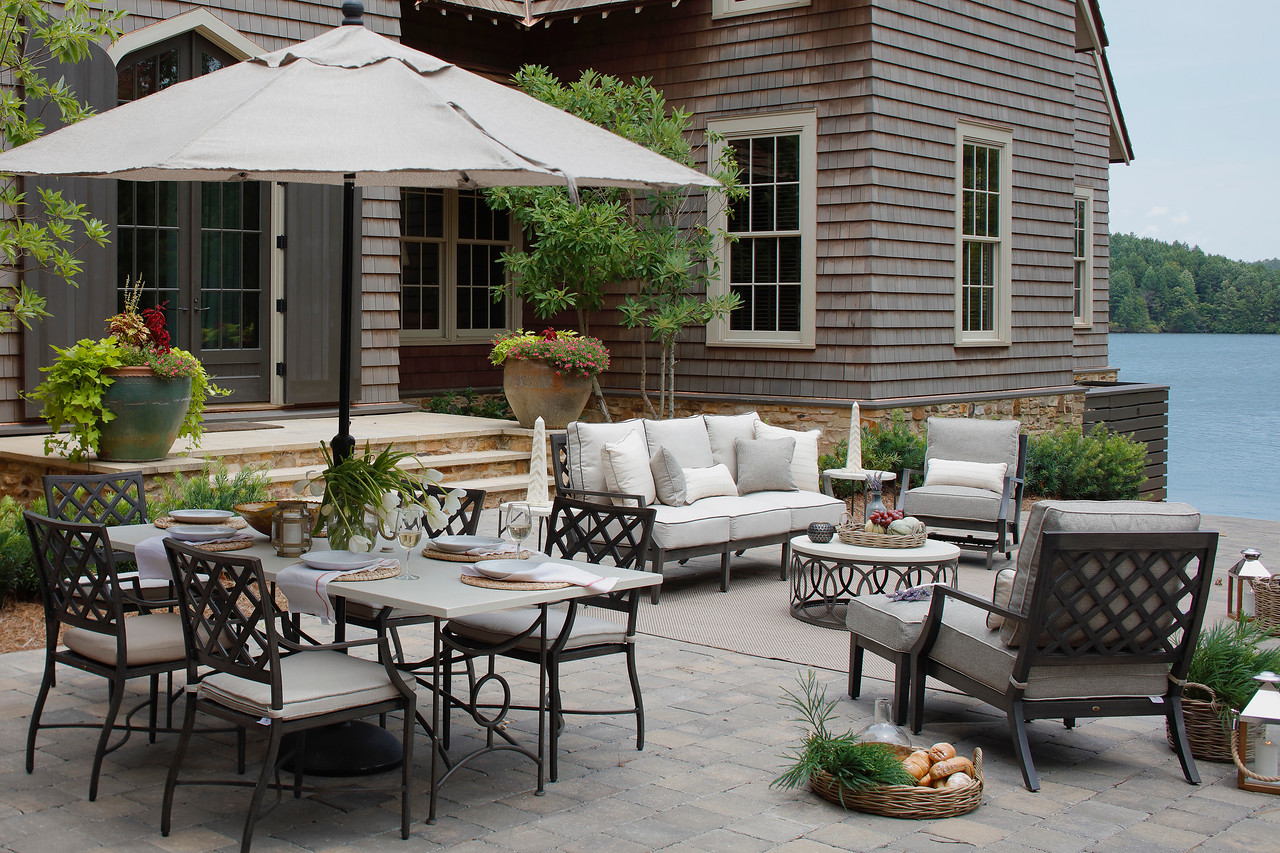
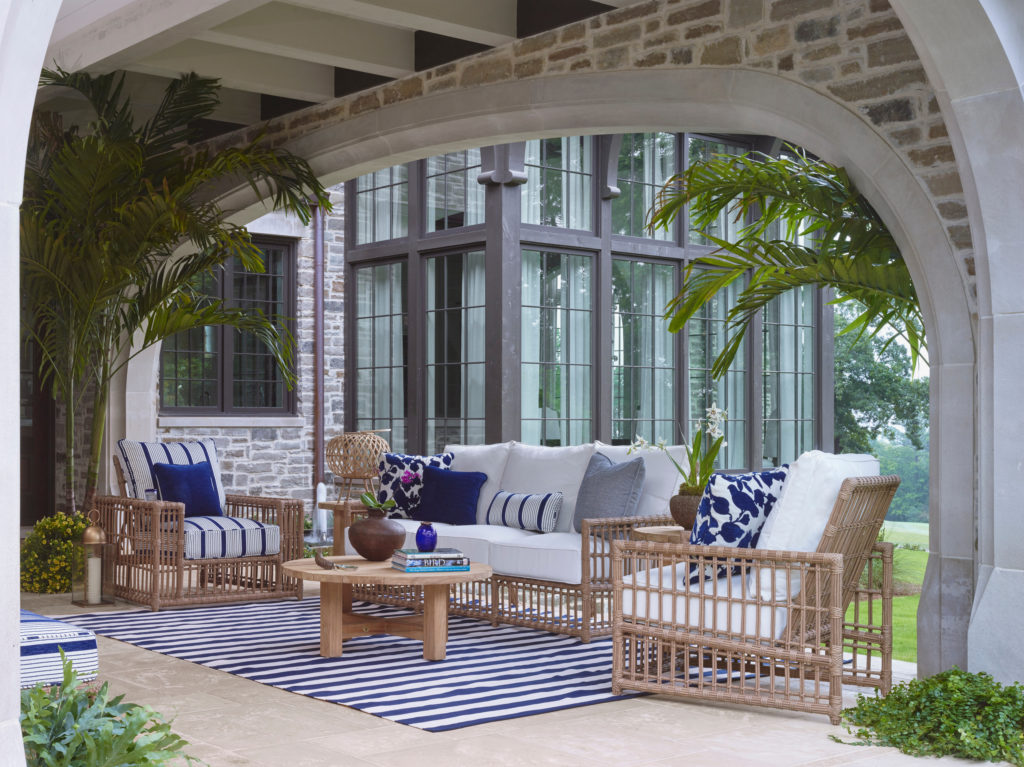
5
AESTHETIC
Your outdoor space should reflect the design, architecture, and aesthetic of the home. It should feel like an extension of the kitchen or living room and the transition from indoor to outdoor should feel seamless. Make sure to use the same or similar materials, color palettes, and design style for a natural, cohesive look.
FEATURED PRODUCTS TO CONSIDER IN YOUR OUTDOOR SPACE
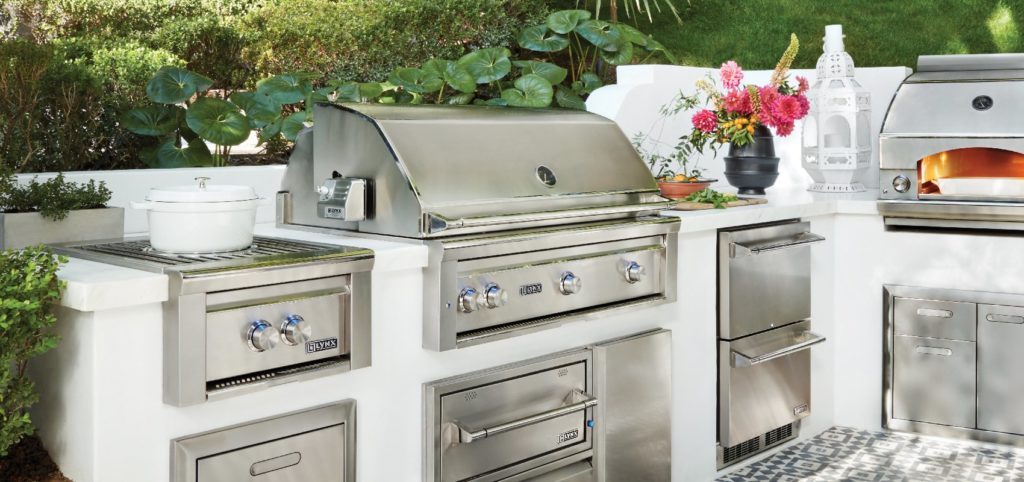
LYNX 36" Grill
Price: $ $ 5,859

ALFA WOOD FIRE OVEN
Price: $3,199
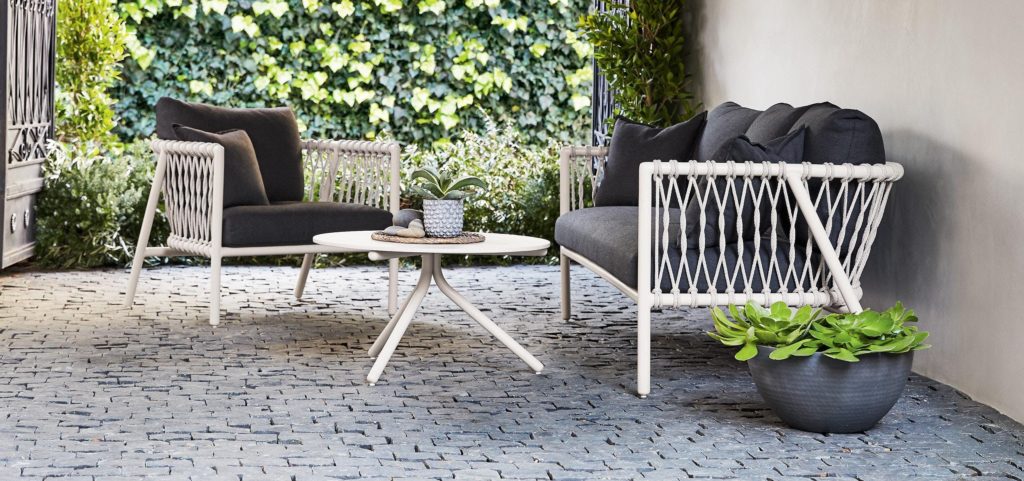
OSCAR COLLECTION
Price: Prices Vary


